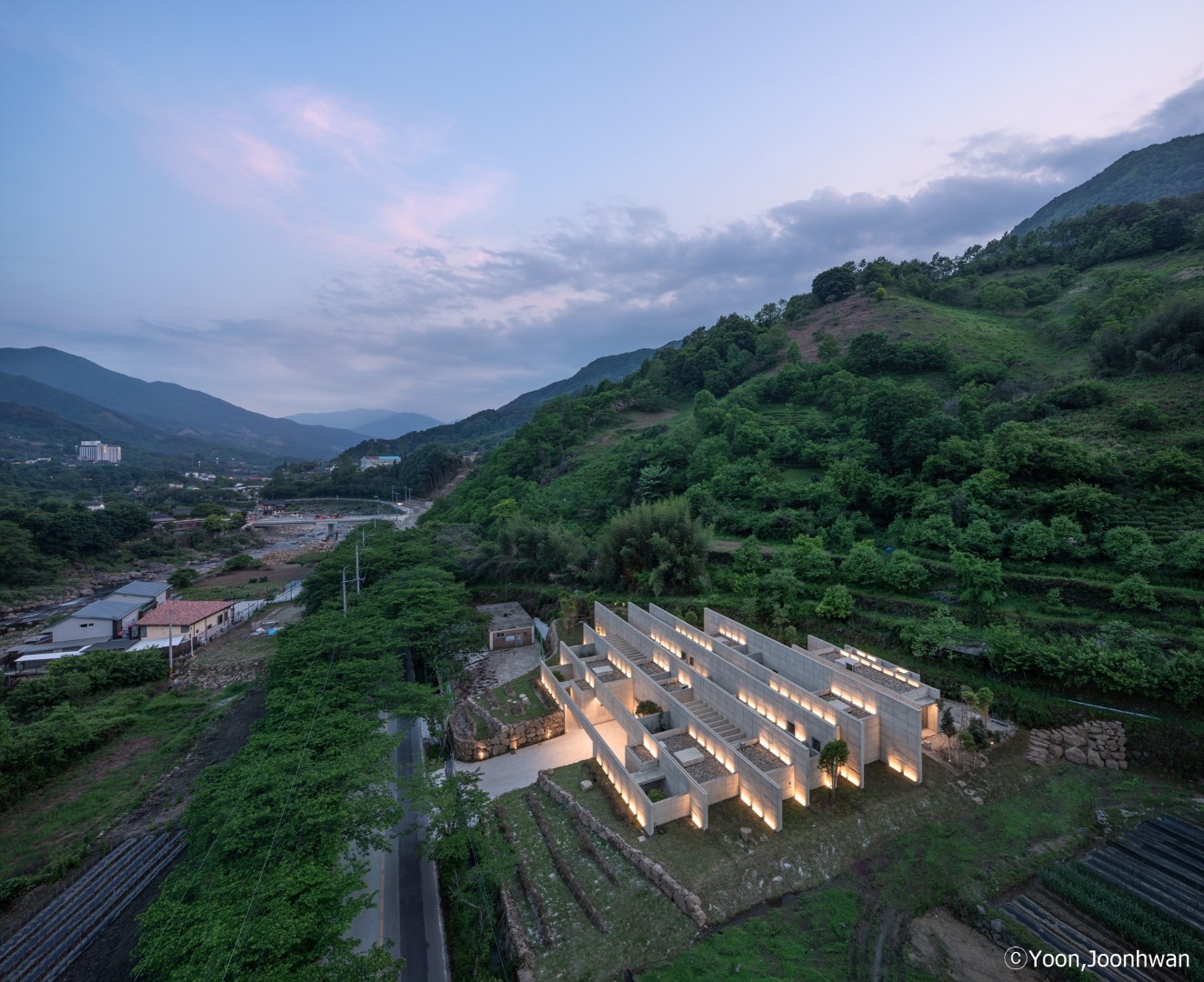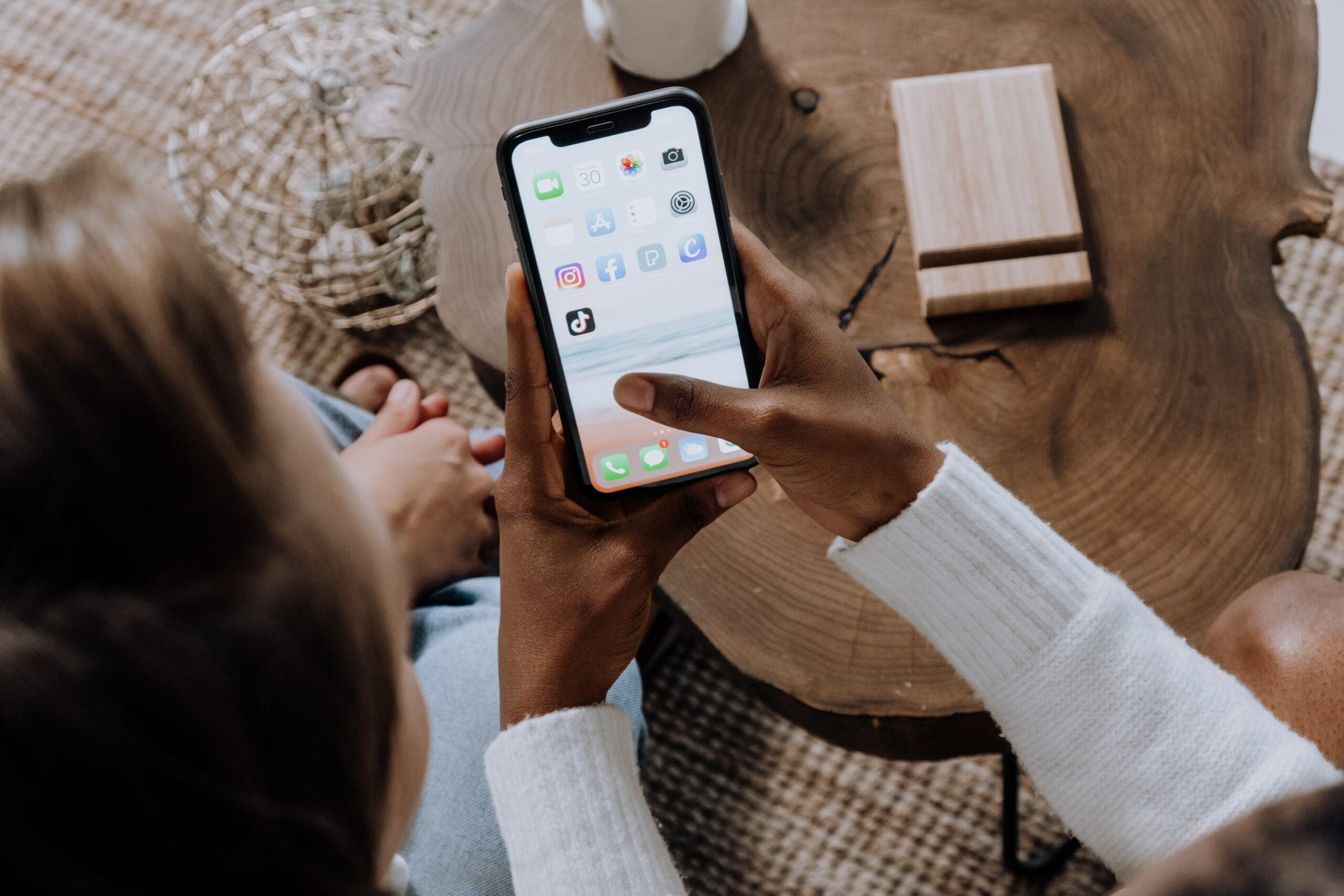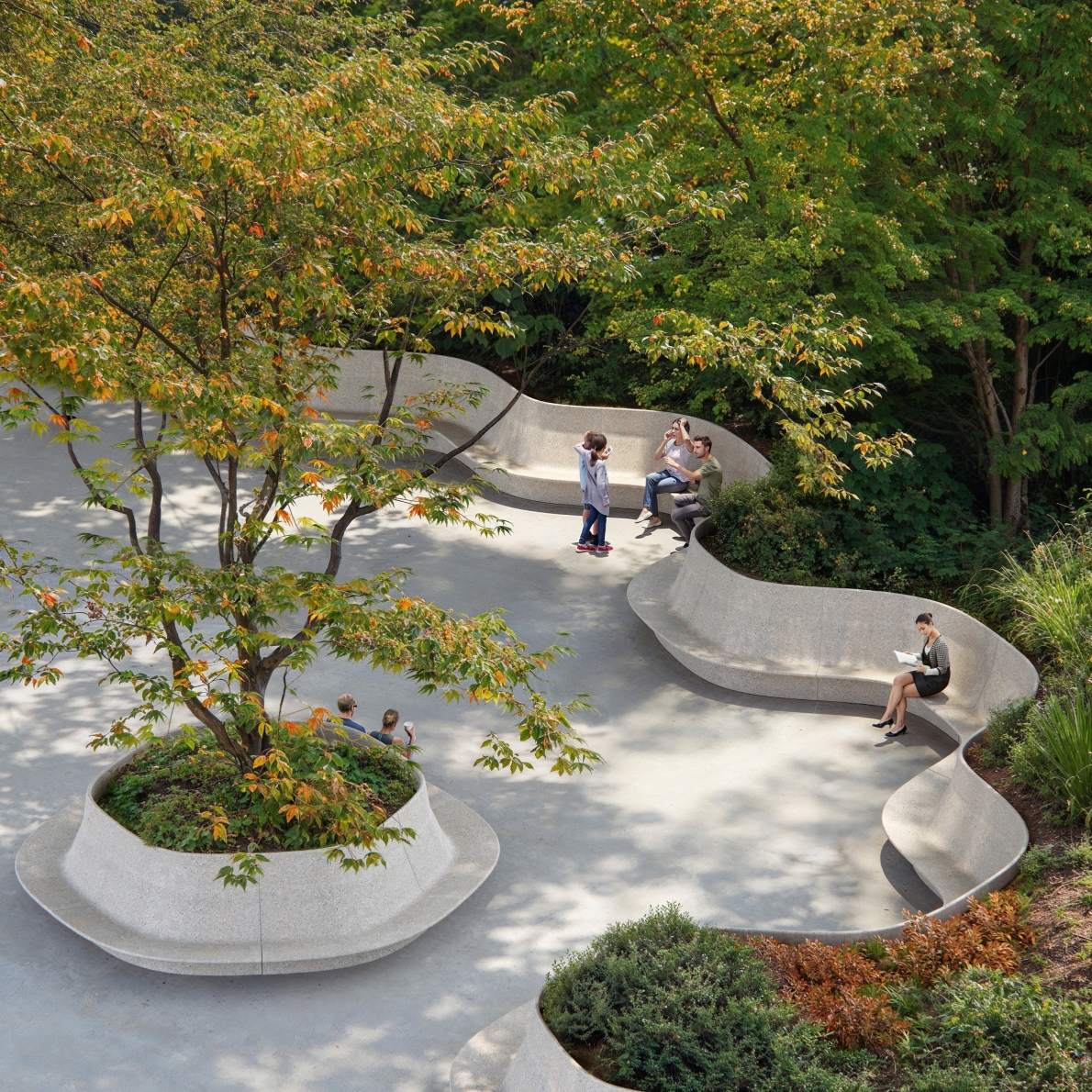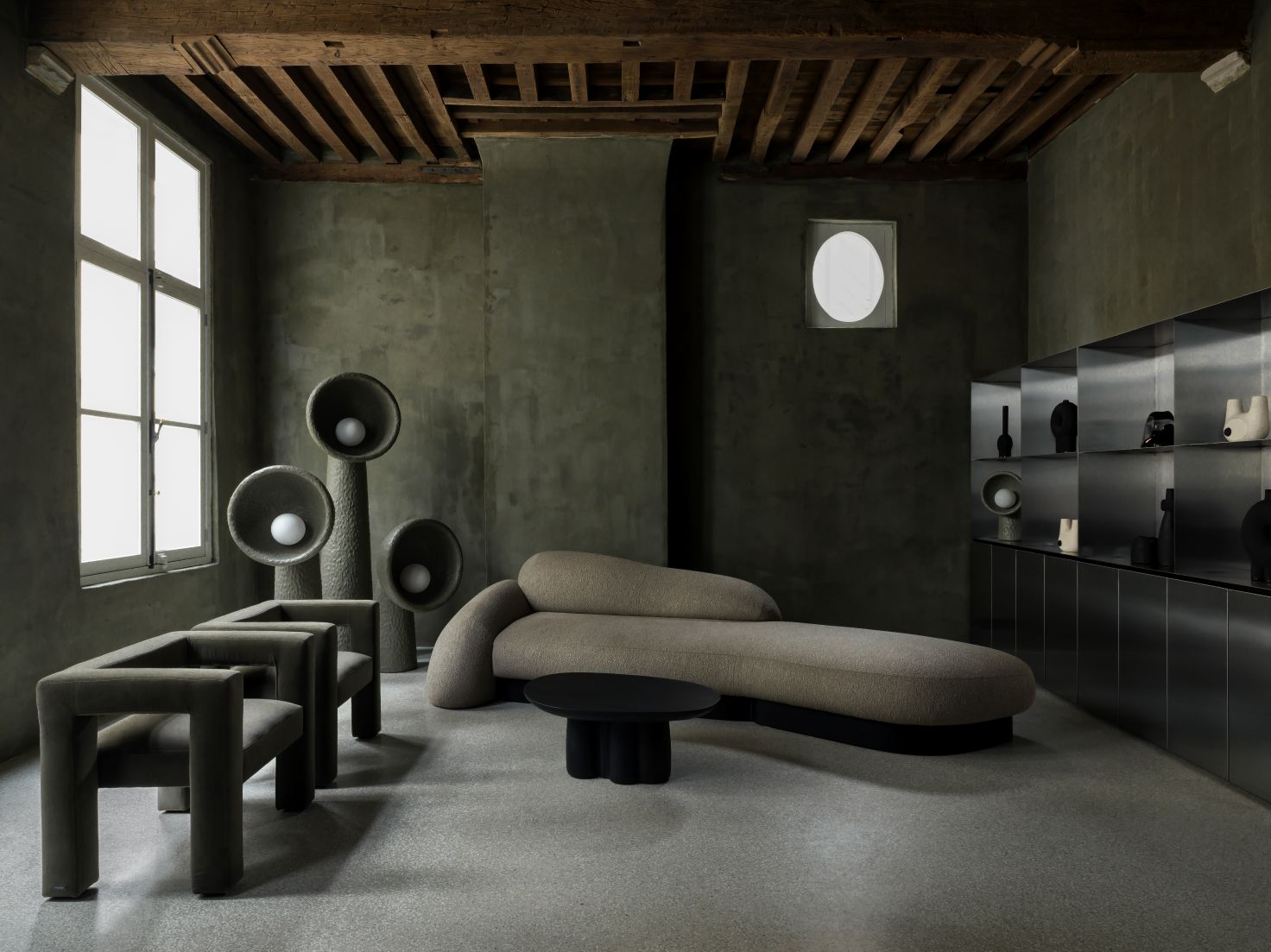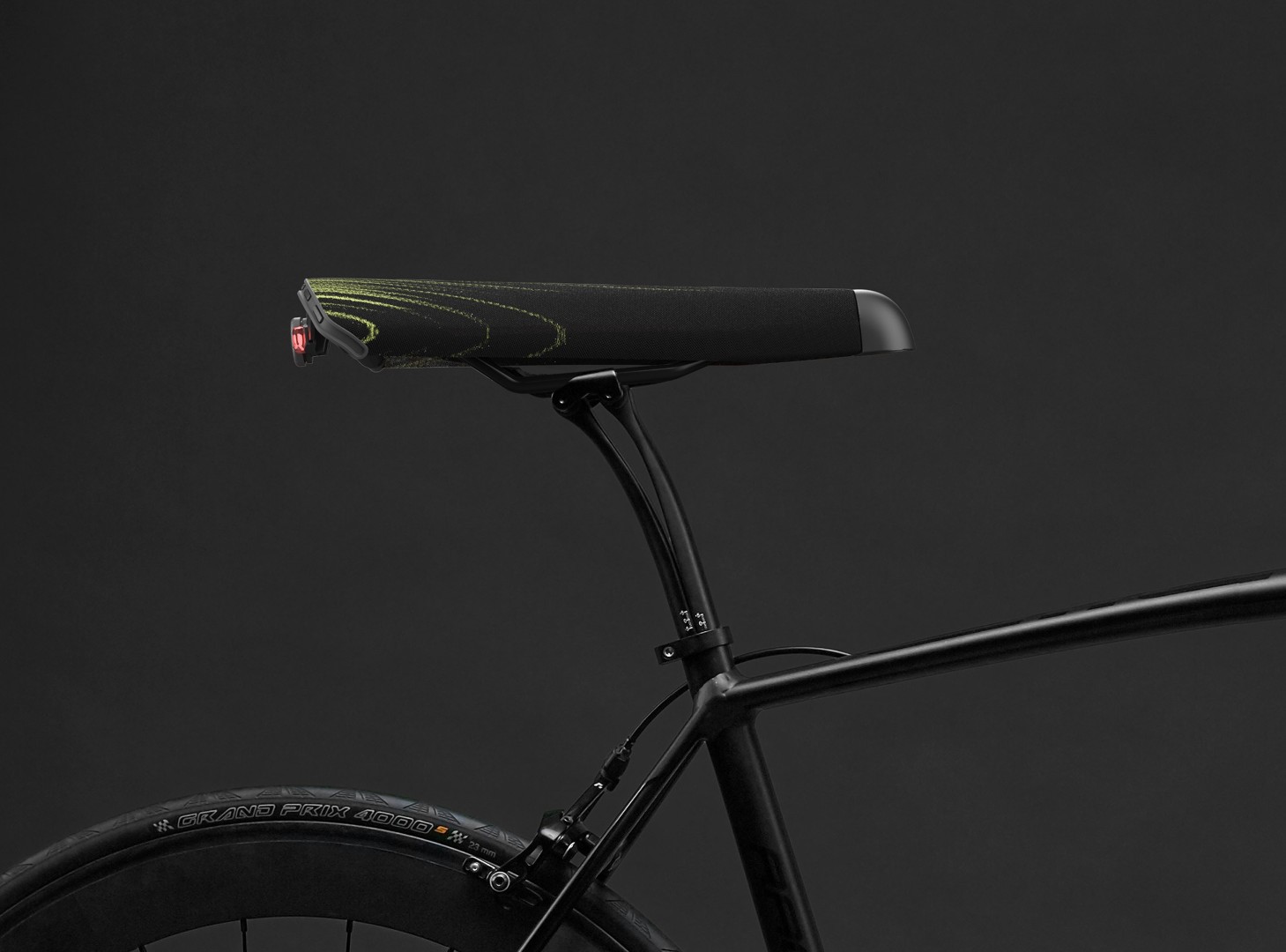Interviewing Designers Briellyn Turton, Carmen Javier, and Phoenix Grey
Magazines have long served as windows into the world of gorgeous home designs and the taste of some design virtuosos. For many decades, trends and brands were selected by a few and embraced by millions. As a result, most homes looked similar to one another and there was barely space for individual creativity – the main differences were the cost of decor. Interior design is a well-oiled machine, even with all the changes it has undergone over the years. With the internet, designers and artists found a fresh new gallery to display their work, set trends, and forge connections – a boundless and public gallery at that.
About Interior Design
In our opinion, interior design can be simply described as “the art and science of enhancing interiors”. With such a creative and technical core, its origins can be traced all the way back to ancient civilizations. The Egyptians, for instance, adorned their humble abodes with simple furniture, murals, and ornaments, always reflecting their religion and daily life. The Romans and Greeks, with their columns, mosaics, and frescoes, expressed an admiration for symmetry and harmony, weaving mathematic principles into their designs – a nuance still celebrated in modern design.
During the Renaissance, there was a notable shift in the way we perceived our spaces. Design’s alienation during the Middle and Dark Ages finally came to an end as Europe started promoting enlightenment by emphasizing proportion, perspective, and human-centric designs. Later, in the Baroque and Rococo eras, opulence and ornamentation became the order of the day, with intricate mouldings, gilded furniture, and lavish textiles.
As design is never truly finished, the 20th century brought with it waves of transformation. The Art Nouveau movement, with its organic forms and motifs, was soon followed by the sharp minimalism of Modernism. The latter half of the century saw a blend of styles, from playful Pop Art to the earthy tones of the Bohemian era.
Today, interior design is a mix of these historical influences, enriched by technological advancements and global inspirations. The digital age, especially the rise of social media, has added another layer to this evolution, making design more accessible and diverse than ever before.
Design’s New Order
The dawn of the 21st century marked the beginning of an era. Not only did the internet become accessible to the masses – and was embraced with enthusiasm – but social media platforms also joined the party. Slowly but surely, our “feeds” and “for you pages” started reshaping the way we communicate, share, and consume information. For the world of interior design, its digital revolution was nothing short of completely transformative.
Platforms like Instagram, Pinterest, and TikTok became virtual galleries, allowing designers to open their portfolios to a worldwide audience. No longer limited to fabulous magazines or elite clientele, design inspirations were now just a mere click away for anyone with an internet connection.
Social media not only gave designers a space to showcase their art, but it also democratized design knowledge. The public could start engaging directly with the industry’s favourites, seeing their answers finally answered and getting a true feel of what previously laid behind the curtain. Moreover, the interactive nature of these platforms created a two-way dialogue. Designers can get real-time feedback, understand popular trends, and even draw inspiration from user-generated content.
This constant interaction also meant that trends evolved at a much faster pace. What’s in vogue today might be passé tomorrow, making adaptability a crucial skill for contemporary designers. As consumerism rears its ugly head, some sustainable solutions have entered the chat. The rise of second-hand shopping for both furniture and fashion items has gained popularity across all social media platforms, which, apart from helping to address environmental issues, also brings a certain je ne sais quoi to our lives and interior designs.
The Democratization of Design Through Social Media
Gone are the days when interior design was perceived as a luxury, accessible only to the elite. Today, design is for everyone, and social media has been instrumental in this paradigm shift.
Trendsetting and Global Influence. Social media has made the world a global village. A design trend that emerges in a little European town can become a global sensation overnight, thanks to platforms like Instagram and Pinterest. This rapid dissemination of trends guarantees a vibrant and ever-evolving design landscape.
DIY Culture. The do-it-yourself (DIY) culture has gained immense popularity in the last few years, with platforms like TikTok and YouTube packed with DIY home decor and renovation tutorials. With information easily accessible on any phone, individuals are now transforming spaces with their own personal touches and creativity.
Accessibility and Affordability. Social media has also made design more affordable, as designers are able to collaborate with brands and share discounts with their followers. Moreover, platforms provide a space for up-and-coming designers to showcase their work, leading to competitive pricing and a more comprehensive range of options for consumers.
Interactive Learning and Engagement. Social media has become an interactive learning experience where collaborative creativity is celebrated. Followers can seek advice from professionals, which has bridged the gap between the two.
Personalization and Individual Expression. The options for design content are endless, which has given individuals the confidence to take matters into their own hands and start truly expressing themselves. Whether it’s a blend of French country with Scandinavian or a fusion of vintage with contemporary, social media encourages personal expression, breaking the confines of rigid design norms.
Briellyn Turton (@studiobrie)
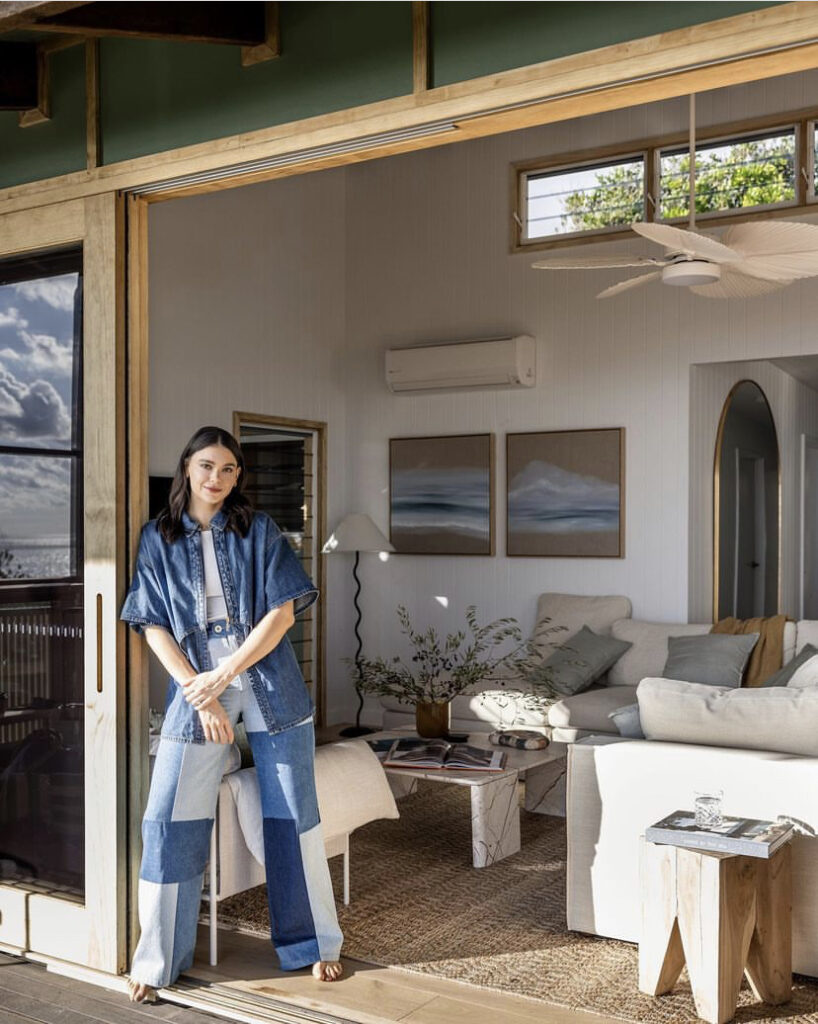
“I vividly remember listening to the @thedesignfiles podcast with @lucy.feagins many years ago on the train commuting to one of my first jobs as a designer, manifesting one day, when I had my own design studio, one of our projects would be featured on the site – today that happenned! So proud of our small but mighty @studiobrie_ team.
Thank you @thedesignfiles for publishing our ‘Straddie Green House’ project. And thank you @tanikablair_photography for photographing it so beautifully. ALSO, you can now rent this incredible home on air bnb! @straddiegreenhouse has all the info. #InteriorDesign #BeachHouse #australianinteriors”
Photo credit: @tanikablair_photography on Instagram
Briellyn Turton is a designer who has seamlessly integrated technology into her design process. With a background that spans both interior design and construction, Turton has harvested the transformative power of social media, expanding her reach by sharing her knowledge online. Today, she owns her own design studio, Studio Brie, and is passionate about content creation – you can find her on several platforms sharing design tips, advice on how to style any room of your house, how to decorate furniture, and much, much more.
How did you get started in interior design and what inspired you to share your work on social media?
I knew I wanted design to be a part of my career but had a hard time discerning which design avenue to take (fashion, graphic, industrial). Pursuing a career in interior design came from the awe-inspiring feeling of walking into well-designed spaces and feeling that emotional connection. I wanted to be doing that, creating that emotional connection between people and spaces. The social media part of things came organically to me. I was aware that it was going to be a very valuable tool to grow my new business in a saturated market, but I also really liked the idea of educating people, particularly those who value interior design but aren’t in the position to hire a professional.
How would you describe your design philosophy?
My design philosophy is heavily steeped in weaving the personalities of the client throughout their home. As Studio Brie continues to grow, I’ve come to acknowledge a need to create a set of ‘rules’ to support this philosophy and ensure that each project inherently reflects our DNA. That’s something I’m working on heavily now.
Brie Turton Interior Designer
“How To Style a Round Coffee Table”
Video credit: Briellyn Turton @studiobrie
Can you share a story about how your work has influenced a follower’s design choices?
I feel extremely fulfilled when I get tagged in a video of a follower where they are showing me how they have designed or styled their space using something I’ve taught them! It’s amazing to be able to help people who really care about their space but aren’t in the financial position to hire a designer.
What are some current trends in interior design that you’re excited about?
One of my favourite trends is the idea of “ugly” design. Design that could be seen as ugly to others but has been hyper-personalised to the owner of the space. In other words, ignoring all the trends and creating a space that you love, with little regard for how anyone may respond to it. With the idea of hyper-personalization in mind, another trend I am excited about is the embracing of vintage and hand-me-down items. I think this leans into sustainability but also links back to the notion of having that personalized space that no one else has, finding one-of-a-kind vintage items with their own story fits perfectly into that.
How do you incorporate sustainability into your designs?
We’ve begun making changes in the studio to move us in the direction of becoming a sustainably minded business. This is part of a larger goal and vision I have for Studio Brie, which would be to achieve B Corp certification. We have started small by introducing a few studio policies – one that’s had a big impact on us has been banning paper for all client presentations, meaning 100% of our client presentations are now done digitally. “The Healthy Materials Lab” has been an invaluable resource for me to educate myself and explore how more established Interior Design businesses are doing things.
Your TikTok account is filled with practical advice, from countertop decoration to renovation tips. What prompted you to start sharing this type of content? How do you decide which content goes on your platform?
It has been trial and error in terms of what I share on the platform, as my following has grown, I’ve realized that educating my followers on how to achieve interior design “best practices” in their homes is the most important pillar of content that I share. People of course also love some good aesthetic inspo, so I’ll be sharing more material palettes and mood boards too.
As both a designer and influencer, how do you strike a balance between staying true to your design philosophy and catering to the trends popular on platforms like TikTok?
Truthfully, this is something that up until extremely recently I did struggle with. However, I think what will allow me to always stay true to my design philosophy is to think of my social media platforms as a direct extension of the design business. For example, any advice I put online needs to be advice I would tell one of my clients.
I love trend forecasting, so that’s something I will continue to make content on, however, people can of course take it or leave it – as they can my advice and design philosophy in general!
Brie Turton Interior Designer
“3 Mistakes To Avoid When Renovating Your Bathroom”
Video credit: Briellyn Turton @studiobrie
How do you incorporate feedback from your social media followers into your design projects or studio initiatives?
It’s always interesting when you receive strong reactions in the comment section of a video you thought wasn’t overly controversial. I think the feedback I receive online doesn’t affect what we do day to day in the business, as we would only listen to feedback from the client whose home we are working on. From time to time, I will ask my followers what they think of a certain design or materials board I put together. However, for me, the insight I receive in return is really used to decide what I will share with my followers moving forward, aka what they are most interested in.
Where do you draw inspiration from when conceptualizing a new design for Studio Brie? Are there specific cultures, eras, or designers that influence your work?
I draw inspiration from all corners, all the time. Often, I get inspired out of nowhere, when I haven’t necessarily been searching for inspiration, which can often be a challenge to capture in the moment…the notes app on my phone is truly the most chaotic place you can imagine!
Fashion inspires me a lot, what people wear on their bodies often shapes the concept of the home they want to live in. Ironically, I hate fashion from the 80’s but adore the interiors. Again, I must come back to my clients’ personalities as a huge source of inspiration. Often one facet of their lifestyle will inspire and drive the concept of a project.
How has the digital age, especially platforms like TikTok, influenced the design preferences of your clients or the public? Do you find that clients are more informed or have specific design requests based on trends they’ve seen on social media?
The influence of not just social media, but media in general has been an undeniably gigantic influence on the public, both good and bad. It gives people this “beauty standard” of what your home should always look like, which isn’t very realistic.
The idea of an “Instagrammable” home also means a lot of people feel the pressure to keep up with trends, much like fashion. Home makeover shows that seemingly transform an entire home in 3 weeks also give people a false sense of what it takes to make major changes to your home, not to mention the budget required to achieve a quality result.
The above makes it even more important to me to be an authoritative voice online that educates my followers and gives them the tools to create highly personal interiors they love and don’t want to change just to appease a trend. I also aim to speak as authentically as possible about what goes into an interior design project, to give my followers and my clients realistic expectations about their own projects.
What advice would you give to young designers looking to establish their own studios or brands? How should they approach traditional design education and the influence of social media?
Starting my own Interior Design Business is the hardest thing I’ve ever done. You must be everything all at once when you start up your own studio. When you run your own business, you must be prepared for 90% hard work and 10% truly creative work – that’s just the reality of it. I think social media is an invaluable tool to get your name out there and build a community that trusts you as an authority. Traditional design education will always be imperative. As they say, “you have to learn the rules, so you know how to break them effectively”.
Carmen Javier (@carmenjavierco)
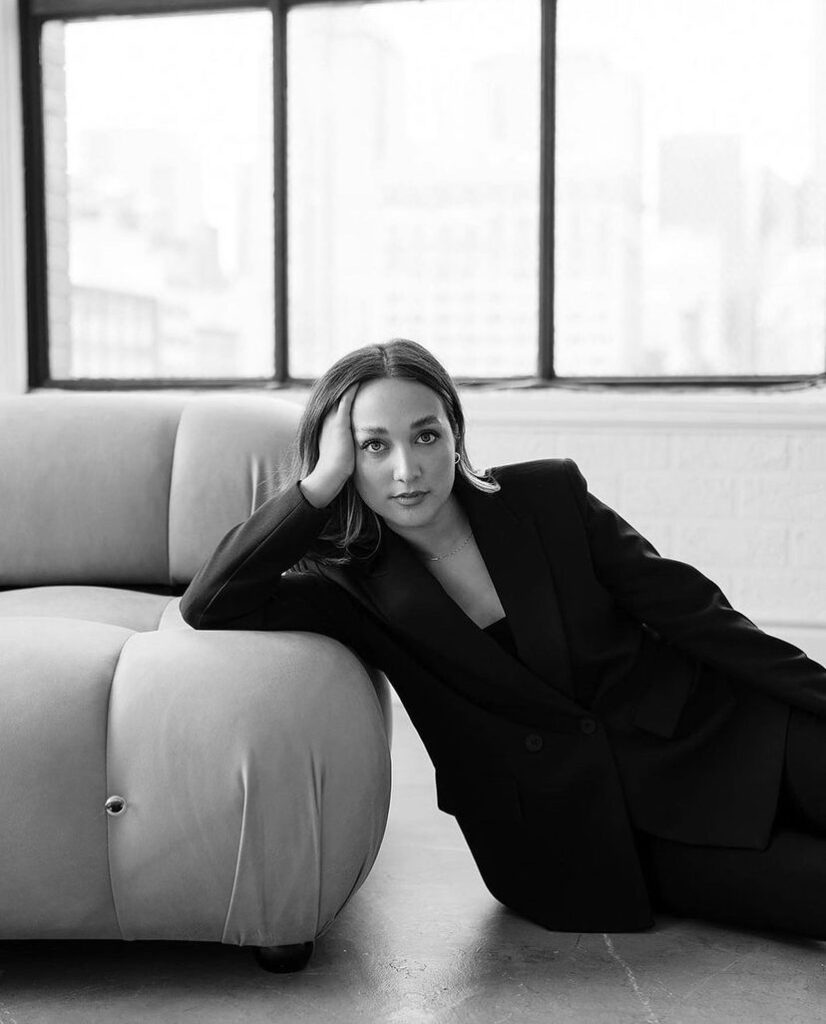
“Feel free to caption this for me cus I am all out of ideas 😅 All of them went to design, sorry 🙃🫠 #friday”
Studio: @workbook_studio on Instagram
Photo credit: @sammiechanphoto on Instagram
Carmen Javier is the founder of Carmen Javier Co, an interior design studio and blog, and one of the main voices on social media when it comes to interior design. Javier’s design philosophy is deeply rooted in the natural beauty of Vancouver’s landscapes and her approach to design always strikes a balance between contemporary and vintage elements. Through her social media presence, she has carved herself a niche in the design scene by constantly giving advice on which furniture pieces and ornaments to buy, sharing room renovations, and showing impeccable design taste.
How did you get started in interior design and what inspired you to share your work on social media?
I always knew I wanted to start my own business since I have loved interior design for as long as I can remember. As a kid, I used to drive my mom crazy repainting my room and moving my furniture around constantly. In my adult years, I completed a business degree and later spent 6 years at a media tech company. My role involved working closely with YouTubers, and I saw first-hand how these super creative, passionate influencers build their channels and grow their brand through their art. Feeling inspired, I quietly started an interior design blog.
Before long, what started as a creative outlet grew, and led me to leave the corporate world to pursue interior design. I jumped in with both feet and went back to school to gain the technical skills and knowledge I needed. Starting my design firm was the scariest thing I’ve ever done, and I wanted to document it all on social media in hopes that it would inspire someone else along the way.
How would you describe your design philosophy?
Being born and raised on the West Coast, I’ve been near the natural beauty of the surrounding landscape my whole life. The mountains, the ocean, the forests, the sunsets – it’s easy to be inspired in Vancouver! It’s given me a deep appreciation for natural materials, and I try to create homes that have a sense of laid-back luxury and elevated ease. I also approach projects with a “less is more” philosophy. Have less but choose each piece carefully and thoughtfully. If I had to describe my signature aesthetic, it would be minimal, curated-cool, and always a mix of contemporary and vintage.
Can you share a story about how your work has influenced a follower’s design choices?
Absolutely! I highlighted an artist named Hannah Noble on my blog years ago, who at the time, was new in her practice and just a few years into painting full-time. She’s an artist whose work resonates with me greatly, and I’ve been lucky enough to commission her for 3 artworks now. Not too long after, a follower of mine mentioned me in a photo showcasing the piece that they themselves had commissioned from Hannah, saying they were introduced to her art through my projects. Little moments like this are such a nice perk of the industry.
Carmen Javier
“Things I Still Buy Affordable As An Interior Designer”
Video credit: Carmen Javier @carmenjavierco
What are some current trends in interior design that you’re excited about?
What excites me is the shift toward maximalist design. I’ve always leaned more towards minimal, neutral spaces, but I love incorporating elements of maximalist design including more exaggerated silhouettes, bold, dramatic marble, and eccentric textures. I’ve also been loving the 70’s revival. Shades of burnt orange, terracotta, sage green, and earthy browns, especially mixed with wood tones and graphic patterns, are such a fun addition to a space.
Being in the public eye as an influencer means receiving constant feedback. How has feedback, both positive and critical, influenced your design choices or business decisions?
I try not to let comments on social media influence my personal design choices or client projects. Design is ultimately subjective and it’s fun to see the debates and disagreements along with the praise. I do, however, use feedback to guide my content decisions. For example, I’ve had an overwhelming amount of my Canadian audience comment that they don’t know where to shop for furniture with the limited options in Canada. So, I’ve started a TikTok series on my favourite furniture stores that are either based in Canada or ship to Canada. Comments and feedback help me keep a finger on the pulse to know what content adds the most value to people.
How has the digital age, especially platforms like Instagram and TikTok, influenced your design process and client interactions?
Social media has been a great tool for reaching potential clients. Gone are the days of interior designers only showing perfectly curated, professionally shot “after” photos. While I still invest heavily in professional photography for finished projects, this is mostly for submitting to magazines and publishers. Instead, I try to share more of the behind-the-scenes process on Instagram stories and on my blog. Potential clients have a desire to see the “in-betweens” of a transformation since interior design is very intimate – you’re working with clients for months, if not years at a time – so showing them what it’s like to work with you behind the scenes is crucial for them to consider working with you.
When it comes to knowing which marketing channels to allocate time and budget to, a key metric I track is the source of my inbound leads. So far in 2023, 95% of our project inquiries have come from Instagram and, surprisingly, TikTok. When I started my interior design studio in 2020, TikTok was still in its infancy and primarily used by Gen-Z creating viral dances. Both the age range and content subject matter have changed dramatically since then – over 48% of TikTok users are aged 24-44 – and home renovation/home DIY has become the 5th most dominant content genre (based on number of hashtag views).
Carmen Javier
“How To Save Money On Furniture”
Video credit: Carmen Javier @carmenjavierco
Managing both an interior design studio and being an influencer must be demanding. How do you balance these two roles, and do they ever intersect in unexpected ways?
Creating content for social media can be a full-time job on its own, so I treat content creation as more of a complementary arm to my design business. Client work is always my priority, but I consciously try to find small pockets of time to document the design process along the way. Spending just a few minutes capturing “before” photos or taking videos during site visits and sourcing trips is an easy way to build a library of content that I can pull from later.
There are certainly times when being an interior designer intersects with being an influencer: the trials and tribulations of my design work are often the inspiration for my videos. Hours and hours of sourcing for items led me to create videos like ‘Where to Buy Lighting’ or “Alternatives to the Camaleonda Sofa”. Without the design work, the inspiration for these videos never comes. The influencer part of my life wouldn’t exist without design!
Your blog features an artist spotlight series where you highlight various artists and creatives. How important is collaboration and drawing inspiration from others in your work?
Collaborating with other creatives is so important to add layers and depth to a space. Whether it be an artist I commission to paint a one-of-a-kind piece of art, or a local woodworker customizing a table from my drawing, I learn so much from working with artisans who have spent years honing their craft. It helps make a home special and unique to each client. In this sense, it can be rewarding to get the client involved in the creative process. Getting them to hand-select the wood stain of their table, or the leather strap on a chair, whatever it might be feels like a collaborative experience for all parties involved and I love that.
What advice would you give to someone looking to start their own interior design studio or become an influencer in the design space?
Becoming an interior designer is one career path, starting a profitable business is a whole other beast. The advice I’d give to aspiring studio owners is to spend just as much time refining your business operations as you would your design work. To those looking to become an influencer, I’m an advocate for building your skillset and defining your unique perspective as an interior designer first. What is it about you that will make people stop and listen? Is it your instantly recognizable signature aesthetic? Is it your particular expertise in an area? Building an audience becomes easier once you’ve built this credibility as a designer.
Phoenix Grey (@mrphoenixgrey)

“Life as of late, feels really great. I can’t wait to share some big things happening behind the scenes. #interiordesign #homeimprovement #interiordesign #homehacks #designertips #toronto #designhack #homestyling”
Photo credit: @mrphoenixgrey on Instagram
Phoenix Grey, a designer with over a million followers across platforms and founder of Orion Studios, is a live example of the digital reach and interior design’s presence online. Recalling his journey, Grey mentions how technology helped him nurture his design skills throughout childhood and how sharing his professional journey and knowledge on social media led to rapid growth and recognition. With a keen eye for detail and a unique ability to blend aesthetics with functionality, he’s committed to making design accessible to all.
How did you get started in interior design and what inspired you to share your work on social media?
I’ve been in the interior design and construction industry for over 10 years! I always knew I wanted to design spaces ever since I was young. I fondly remember the sandcastles with secret passages I would build as a child and playing the “Sims”, which really polished my skills when I was young – I never actually played the game for the characters, it was just to build the houses. It’s funny that. That was my stepping stone into learning about programs like Computer-Aided Design (CAD) in high school, which showed me the potential of following this as a career.
When it came to sharing my work and knowledge online, it was my partner that convinced me. Following his advice was one of the best things that happened in my life. I had a following on Instagram from my modelling days but had never shared what I did as a professional. I was working for a firm that was very strict, and they ultimately ended up letting me go once they saw my social media growing so quickly. As unfortunate as this was, it kicked me into high gear to show them how wrong they were. It’s been just over a year now and I’ve gathered over 1 million followers across all my platforms.
How would you describe your design philosophy?
I would have to describe my design philosophy in two parts. The first is from an intimate standpoint: I love being able to design and create spaces that not only inspire but also have a level of intimacy to them. They are warm and cosy but have a dark that allows them to feel personal. I’d say that what sets me apart are my views on function over form, while still marrying them – my following can verify this. I take an approach to my designs from a liveable everyday experience. Yes, we all want a beautiful space, but how does one live in it? Is it cleanable? How do you operate in it day to day? Many designs you see in magazines look great, but the average person knows that’s not liveable. I can still make a space stunning, but functional from an everyday standpoint.
Can you share a story about how your work has influenced a follower’s design choices?
I constantly get messages through my DM’s or emails telling me how my wealth of knowledge has helped shape the way people design or decorate their homes. I’ve had people say that my videos are like a free masterclass on interior design. I give my professional advice, as well as my opinions on certain decor styles, furniture items, and how to put things together and coordinate colours, and let my followers take it from there. I am always available for consultations that fill up most of my time because sometimes the clients just need to be shown what to do instead of suggested – as I do in my videos.
I offer my consultations for individuals who just want a call to discuss their space: from the challenges in terms of spatial planning and colour palettes, all the way to full custom builds. The range of my work is very wide, but one of the most rewarding feelings is hearing how many people I have been able to help, and the impact my knowledge has made on them with turning their house into a home.
Design Daddy
“2024 Interior Design Trend Predictions”
Video credit: Phoenix Grey @mrphoenixgrey
What are some current trends in interior design that you’re excited about?
Halfway through 2023 and already I’ve been studying the new trends coming into 2024. We’ve been in this light and airy era for the last 8ish years now where everything is white/beige and white oak – don’t get me wrong, these are a winning combination, but my personal favourite designs and styles are dark and moody, and I see a shift in design slowly starting to go to the dark side in terms of elements and finishes in a home. Designs always sway back and forth from light to dark over time, and I’m most excited about the willingness of clients to start using colours and dark tones in their homes.
How do you incorporate sustainability into your designs?
Construction is one of the hardest industries to be sustainable, however, there are a lot of elements you can include in a project to reduce its environmental impact. In any renovation or new build, I do my part to promote sustainability. I will opt for renewable sources and recycled materials that have been repurposed where I can, and I’ll source brands that have a minimal impact on the environment – or at least have additional initiatives to contribute to sustainability.
You have a significant following on TikTok and Instagram where you share your opinions on interior design trends and give tips on how to get the most out of a room. How do you decide what content to share and how has the response been from your followers?
When it comes to my content strategy, I meet with my team bi-weekly to discuss trends and news articles that cover certain design topics. This helps me determine a good amount of the videos I make; the rest are a sprinkle of fun like the “Design Icks That I Will Send You To Jail For” that allow people to look into my personal preferences and jovial side. I also share tips and tricks on how to design or organize a space, all of which I have learned over the years, or just new entertaining ways to innovate the way a space looks. It really is another full-time job, on top of my studio’s projects, working on the social media side of the business when it comes to content strategy, filming, editing, posting, and engaging with followers.
You’re known for your insights on interior design trends. Could you share with us some trends that you believe are on the rise, and any that you think are on their way out? How do you stay updated on the latest trends in the industry?
There are always so many new trends, it feels like every day there is something new. From what I’ve noticed in the industry, and with my personal clients, some of the biggest trends moving into 2024 are butler pantries, and having the walk-in options (these are really popular in my renovations and new builds). It’s funny that no matter how big the kitchen is, there is never enough room – but the idea of having this dedicated space to store everything away so your kitchen always looks pristine with no appliances out is really gaining popularity. As mentioned before, darker bolder colours are on the rise as well, compared to the muted pastels we’ve seen for the last while. Lastly, sculptural lighting is making a comeback, be it a pendant light, a table light that brings an artistic flare to the design, or the way the light is reflected – we really are going to really see lighting design explode moving into next year.
Design Daddy
“Furniture I Would Never Buy”
Video credit: Phoenix Grey @mrphoenixgrey
You offer a service called “Orion Studios” on your website. Could you tell us more about this? How do you balance your roles as an interior designer and a content creator?
My company is called Orion Studios – Orion being my middle name. When the social media side of my business started to expand so quickly, I realized there were so many people who needed help with their spaces. On top of that, I came to the realization that my “digital classes” convinced many people that they needed my help in a renovation or new build. Many of my clients didn’t think they would ever need a designer until they saw my content. I offer 3 packages for my clients depending on their needs: a simple design consultation and recommendations, a full-service design package where I create the whole project and source the items included in the design, and the renovation management package where I take care of the layout design, coordinate the construction and make the design fully come together.
It’s a challenge sometimes to balance my workload between being a full-time designer, a full-time content creator, and having a personal life. My Monday to Friday is typically very busy working on client projects or filming with my team, but having a team working under me has really helped. I usually get at least one day on the weekend to myself, even though with social media you’re never really off. There is always something happening, and things change with the fall of a hat, so you always have to be aware.
Could you share a challenge you’ve faced in your journey as an interior designer and social media influencer, and how you overcame it? What did you learn from this experience?
Oh boy, there have been so many challenges with growing my business. I think one of the biggest challenges was being told that I couldn’t do it. I had the wrong group of people in my life that didn’t believe in me before, for either selfish reasons, or who knows what – they were the wrong people to keep close. When I changed these influences that surrounded me in my personal life, that made the world of a difference. Having so many people cheering me on from the sidelines and being proud of what I have accomplished so far means more than I could ever put into words. This overcame any fears or challenges that I had in the past. Having people believe in you is all you need to be able to succeed, it gives you so much strength and courage to take risks to grow, and I couldn’t be more thankful for all the great people I have in my life now who continue to inspire me. You really are a product of the environment you surround yourself with, and it took me a while to realize that, but could not be happier.
Given the popularity of your TikTok and Instagram platforms, how do you see social media shaping the future of interior design? What role do you believe it plays in democratizing design knowledge and trends?
Social media is truly a double-sided sword. On one hand, you get to see all the world has to offer, the new styles, trends, and exciting ideas to inspire you to change up a space. On the other side, you are so overexposed and overstimulated that you can’t make up your mind. You find yourself buying a new decor piece of furniture each time someone new influences you and it turns into a vicious cycle of trying to keep up and constantly consuming. I feel like this can be said with any profession on socials really. These apps have changed the way items have a shelf life, which is now very short-lived when they are overused and overexposed online. Once you see that almost everyone has it, you don’t want it anymore.
This has really changed the way I design now. I have taken a more timeless approach to my styles overall by adding elements of trends, while some people dive right in with tendencies and end up disliking them before they even get completed. Regardless of trends that come and go, I will always say “If you love it, that’s all that matters”. Even when I make my joke videos about the worst design elements in a home, I always let people know that I don’t live in your home – you do, so do whatever makes you happy.
Trendy Design is Individual Design
With such a seismic shift in the last decade, and social media playing a pivotal role in its evolution, interior design has been made truly accessible to everyone, everywhere. While social media has undeniably revolutionized the design landscape, the core of interior design lies in understanding and interpreting individual needs, desires, and personalities. In this digital age, the role of an interior designer is not just to create beautiful and trendy spaces, but to curate experiences that are authentic, meaningful, and timeless.



